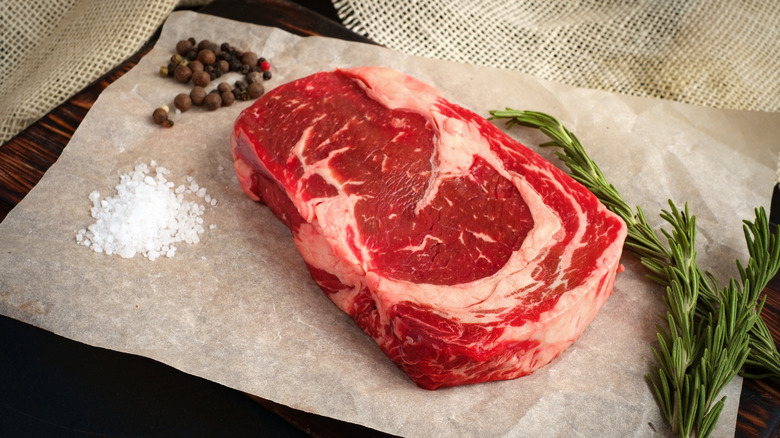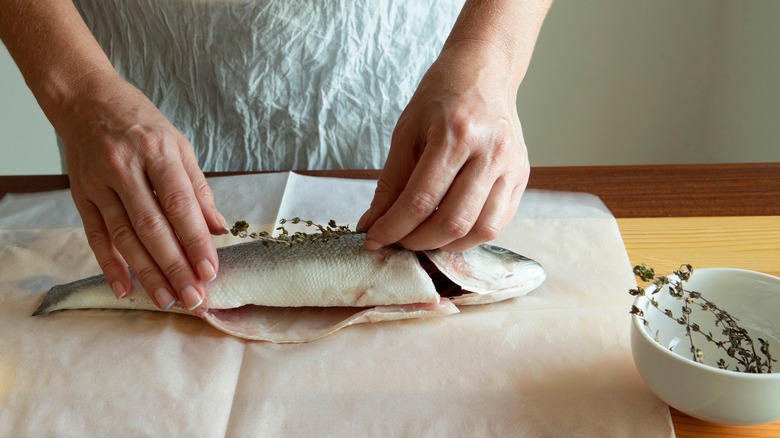What Makes Gardenia Butcher Paper Unique?
When you step into your local butcher or fishmonger shop, there's probably a good chance that the first thing you're going to notice is the wide array of meats. From ham hocks to turkey legs and everything in between, it's a grocery fantasia. By the time your butcher hands you your neatly wrapped selection, the last thing on your mind is probably the paper it comes wrapped in. But, it's worth a second thought.
Butcher paper is specially designed to keep airborne contaminants, bacteria, and flavor contaminants out of your meat, says WebstaurantStore. According to MasterClass, it's made from kraft pulp treated with caustic soda, sulfides, and sizing agents that promote waterproofing. So, how does it work? In making regular paper, Refine Packaging explains, wood is turned into pulp, then into paper. The pulp is held together by cellular structures called lignin and cellulose. To make kraft paper, the wood pulp is cooked in sodium sulfide and sodium hydroxide (aka caustic soda), which strengthens the lignin and cellulose's natural chemical-bonding properties, thereby producing a more resilient paper. In fact, "kraft" is the German word for "strong."
The type you might be most familiar with is white butcher paper, the uncoated sheet that your bacon egg and cheese sandwich comes wrapped in at the deli. But, that's only a peek into the world of butcher paper. One particular type is called gardenia butcher paper, and it's regarded by butchers as the premium offering. Here's what makes it unique.
Gardenia paper offers waterproofing and breathability
Besides standard white butcher paper, there are many other types of specialty butcher paper designed for different functions. Per MasterClass pink butcher paper is best for wrapping brisket and other smoked meats. Peach-treated butcher paper is highly water-resistant, making it ideal for wrapping juicy fresh cuts.
But, according to WebstaurantStore, gardenia paper offers "superior protection and holdout against moisture" compared to any other type. Gardenia butcher paper is specifically designed to protect poultry and fish from outside moisture. Plus, says Own the Grill, it's distinctly green in color; you can't miss it at the butcher shop. Just as gardenia paper keeps moisture out, it also prevents oils from leaking out of the meat inside the package, as well. Yet, says the outlet, gardenia paper is also breathable enough to keep your fresh cuts from getting soggy. Many butchers consider gardenia paper more effective at waterproofing than plastic. To boot, butcher paper is also a more sustainable and eco-friendly packaging option than plastic.
While parchment paper can be substituted for butcher paper in a pinch, its waxy coating, thinness, and lesser waterproofing abilities make good old butcher paper the better choice — especially if you have the option to choose gardenia paper.

